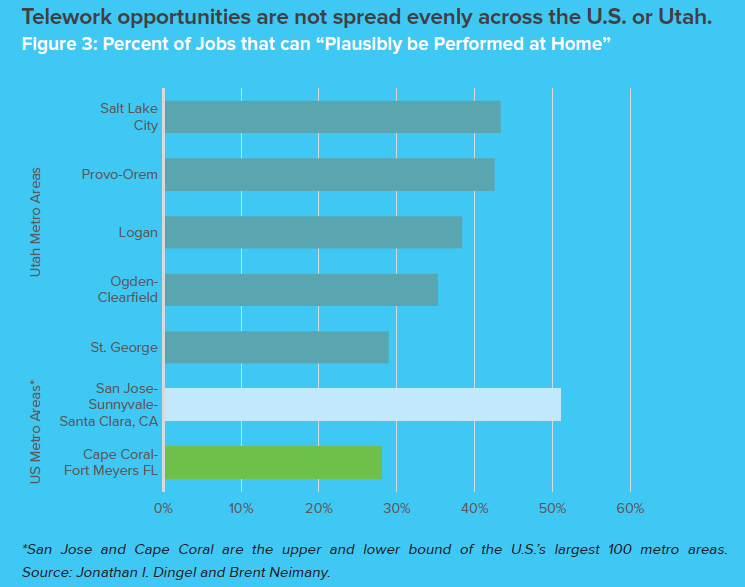Utah Foundation began a teleworking study in early 2020 without knowing just how timely the topic would become. Following the outbreak of the coronavirus disease a couple of months later, public and private sector responses upended many Americans’ working lives, sending millions into telework arrangements overnight.
This report, Work Away from Work: The Challenges and Promise of Teleworking, examines trends and seeks to assist citizens and public and private sector leaders in addressing the challenges related to teleworking.
Later this year, Utah Foundation will issue a follow-up report that addresses remote working in the context of air quality impacts. Special thanks to the Utah Clean Air Partnership (UCAIR) for its support for both reports.
Among the findings of the new report:
- Less than one percent of U.S. workers primarily worked from home in 1980. By 2016, 43% of employees spent at least some time working away from their coworkers.
- The percentage of remote work per week for teleworking employees has also increased over time; more and more employees are working remotely four to five days per week.
- Somewhere between one-third and two-thirds of jobs can likely be performed remotely, depending largely on the composition of the local economy.
- Teleworking seems to have a positive effect on productivity and employee retention, as well as lowering absenteeism.
- The State of Utah’s teleworking pilot program found a 20% increase in employee productivity, which has helped to inspire an expansion of the program across state government.
- There are significant potential financial benefits for employers beyond increased productivity, including: real estate savings, reduced absenteeism; reduced turnover; and improved continuity of operations in the face of disaster situations. Employees may also enjoy reduced costs for travel, parking and food, even when taking into account additional home energy costs and home food costs.
- Research suggests that a combination of teleworking and in-office work is optimal – as opposed to working exclusively at the office or remotely.
- Teleworking seems to work least well for support and service personnel. It is better for managers and knowledge workers.
- There are concerns about telework, which has led some organizations to shift away from it; research suggests that two-thirds of teleworkers are not engaged in their work, and more than one-third get no direct contact with their teams.
- There are multiple ways to ensure strong management and engagement of teleworkers. Among others, these include: setting clear expectations; providing strong technical support; creating team-building opportunities; and using regular and meaningful communication to prevent employees from feeling isolated from their colleagues and employers.
- The dangers of disconnection and isolation in a telework arrangement should not be overstated. Those who work remotely 60% to 80% of the time are the most likely of all employees to strongly agree that their engagement needs related to development and relationships are already being met.
- The mass-experiment in remote work requires quick organizational adjustments. It also provides an opportunity to gather data on teleworking to determine what works best and for whom.



